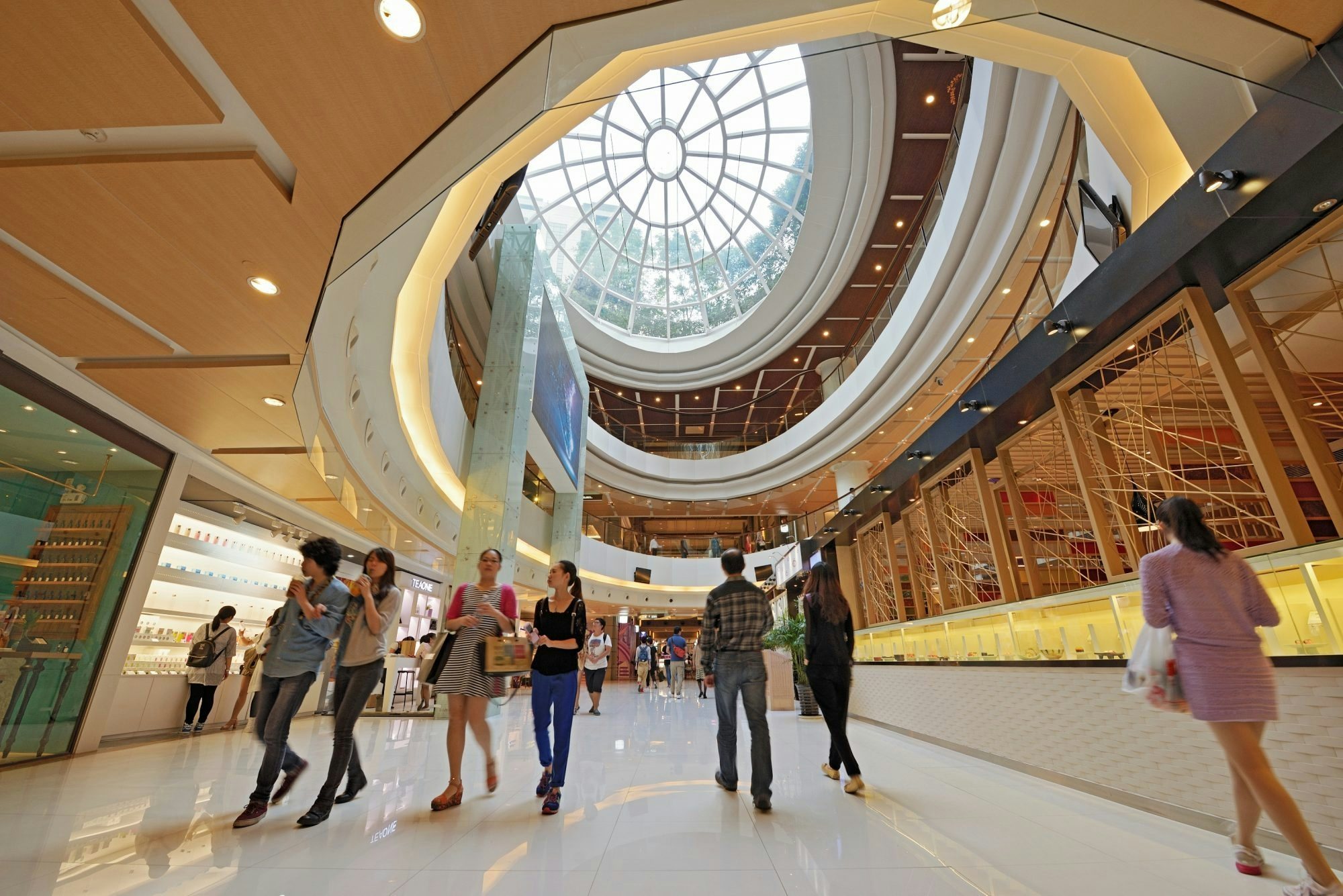In the stylish epicenter of Shanghai’s hip Xintiandi district, shoppers can browse an upscale mall for $5,000 designer dresses and shoes, and then stop downstairs for a $4 salmon roll at Sushibar Ichininmae. However, there is a uniqueness that sets this mall apart from many others in downtown Shanghai: almost all of the brands are Chinese.
As the presence of Chinese fashion designers grows considerably at fashion events in Paris, London and New York, Xintiandi Style Mall is working closer to home to encourage a new wave of millennial luxury shoppers to buy local Chinese brands. It’s a tough market, but Xintiandi Style is leading the way for alternative Chinese malls of the future.
The Shanghai Xintiandi Style Mall was launched in 2011 with the owners aiming to take advantage of a new younger audience and promote Shanghai as a worldwide fashion capital among other global cities. Property developers Shui on Land, which owns other malls across mainland China, privately own the mall in the famous Xintiandi shopping district of downtown Shanghai. The Xintiandi Style mall is the first of its kind specializing in almost uniquely Chinese brands, with American designer Vera Wang, Australian brand Karen Shen and Singaporean label Mu Apparel serving as some of the few international luxury stores in the center.
The Xintiandi Style Mall has no plans to open other foreign luxury brand stores, but does host luxury buyer store ALTER, which permanently showcases brands from across the globe. Up-and-coming international brands are having a moment in Shanghai as their popularity with Chinese millennials increases, and the desire for more traditional luxury brands begins to waiver. In some circles it seems this young market has been looking for fashions largely from imported designers, with buyer stores like ALTER helping to bridge the gap between the foreign brand and Chinese consumer.
Despite this, Xintiandi Style is branching out in an attempt to collaborate with, and promote home grown Chinese designers. Brands on display include the increasingly popular Ji Cheng and Uma Wang, who have both shown at fashion weeks across the world, and emerging designers Ban Xiaoxue and Jade en Plus, who were main features at Shanghai’s own fashion week. Shanghai Fashion Week is the biggest feature in Xintiandi Style’s annual calendar, and the company hosts its own showroom at the event, where it works closely with young designers. Part of its business model is to identify and reach out to these new Chinese brands, offering help with business strategies for their clothing lines, in exchange for eventually opening stores in the Xintiandi Style Mall. Previously, locations promoting Chinese-only brands in mainland China have been restricted to individual boutiques, like Beijing’s Brand New China. Uniquely, Xintiandi Style is the first of its kind: a mall dominated by Chinese brands.
So what does the mall look like? At present, there are more than 30 stores in the mall, with lots of the brands coming from designers who are already established celebrities in their own right, and well known among the young Chinese market. Interestingly, despite Xintiandi Style mall marketing itself as almost exclusively Chinese brands, the use of foreign celebrity designers is certainly to draw in the younger crowds. An example of this is the Stayreal clothing store, which is founded by Ashin, the lead singer of Taiwanese rock band Mayday. Another example is Smudge, a brand founded by singer and actor JJ Lin, who—despite being based in Taiwan—is Singaporean.
A spokesperson for Xintiandi Style told us that although the mall often looks empty, they believe this is because their target audience doesn’t consist of people who wander around to shop, but those who go directly to the store knowing what they want to buy. The company maintains it has achieved “almost double the numbers in sales and traffic since opening in 2011” despite facing increased competition from online retailers like Tmall. In any case, Xintiandi Style seems to be confidently pushing its new shopping agenda, with the aim of continuing to open more stores in the New Year, and acting as consumers’ go-to stop for Chinese luxury brands.
